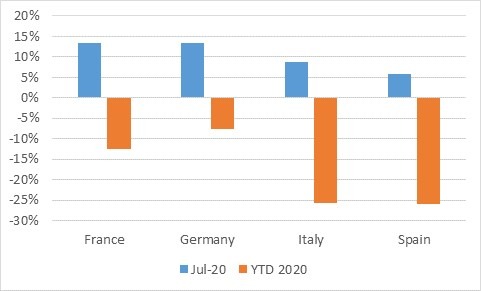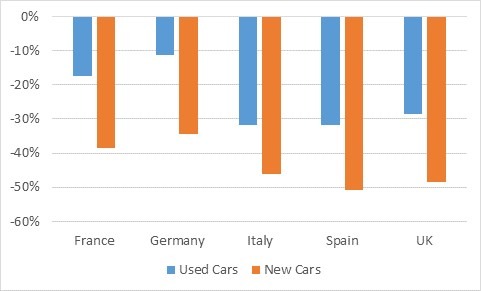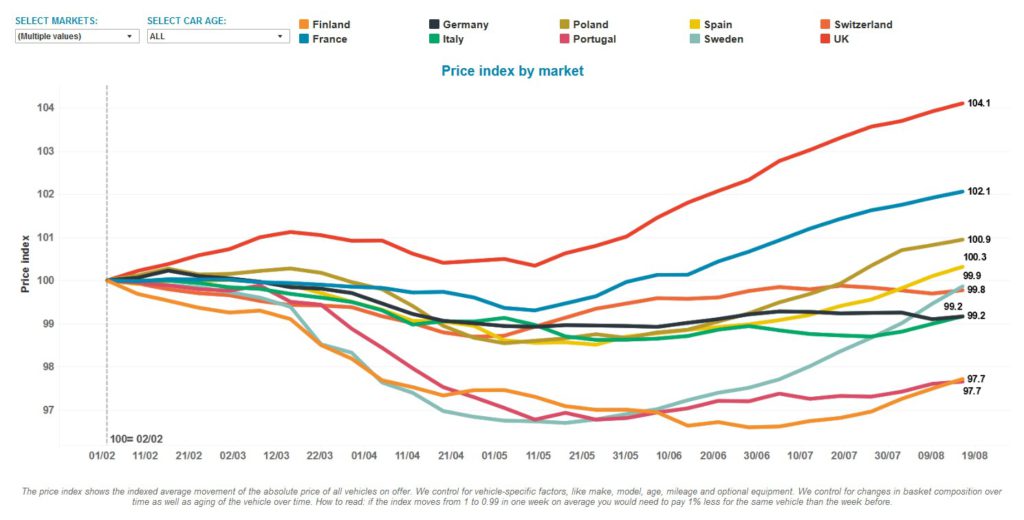European Commission President Ursula von der Leyen has proposed increasing the bloc’s emissions reduction targets. At her state of the union address yesterday, she outlined plans to increase the 2030 goal from 40% of 1990 levels to ‘at least 55%.’
Von der Leyen said that some 170 business leaders and investors had written to her the previous day, calling for the increased target. Other European bodies also backed the 2030 climate target plan, but outlined the need for supportive policies as well as cautioning against undercutting national action.
European Green Deal
At the core of the Commission’s Green Deal are its plans to achieve continental climate neutrality by 2050. Von der Leyen explained this target cannot be achieved with the status quo. Instead, things need to be done faster and better. So, after holding a public consultation and conducting impact assessments, the Commission decided to increase the 2030 target for emission reduction to at least 55%. ‘I recognise that this increase from 40% to 55% is too much for some, and not enough for others. But our impact assessment clearly shows that our economy and industry can manage this,’ she said.
To reach these targets, the Commission will introduce a series of measures, including reforming energy taxation as well as the EU emissions trading scheme, improving energy efficiency, and boosting renewable energy sources. Furthermore, all existing climate and energy legislation looks to be revised by next summer, in line with the new target. ‘We can do it. We have already shown we can do it,’ Von der Leyen said. ‘While emissions dropped 25% since 1990, our economy grew by more than 60%.’
Von der Leyen confirmed in her speech that 37% of the €750 billion NextGenerationEU package will be committed to green deal objectives. The scheme will also look to invest in ‘lighthouse European projects with the biggest impact’. She identified hydrogen, renovation and one million electric charging points as key examples.
Automotive reaction
The European Automobile Manufacturers’ Association (ACEA) confirmed the automotive industry’s support for the 2050 climate neutrality target. ‘It is clear that the EU strategy needs to be reviewed and adapted periodically to ensure that all parties are on track to meet its objectives,’ said ACEA’s director general, Eric-Mark Huitema. ‘However, policy makers need to put in place not only targets but also the required supportive policies for all vehicle types, without which these targets will simply not be achievable.’
These policies include a dense EU-wide network of charging points and refuelling stations, alongside economically-sustainable incentive schemes. ACEA views these as essential to make zero-emissions mobility accessible and affordable for all Europeans. The association also called for all energy carriers to be part of a stronger EU emissions trading system, that applies a carbon price at a level that ‘drives real change.’
Regarding the CO2 emissions from new passenger cars and vans, ACEA called for the Commission to ensure all necessary enabling factors are delivered and strengthened before last year’s targets are raised. ‘We recognise the desire to be a global trailblazer when it comes to climate action, but we will need an unprecedented regulatory shift to ensure all the right enabling factors are secured,’ said Huitema. ‘Until we have a clearer vision on the accompanying policy framework and the impact assessment, it is difficult to predict what a realistic scenario is in terms of future CO2 targets.’
Transport and Environment (T&E) called the new 55% target ambitious but warned against undercutting actions on a national level to cut down vehicular pollution. It explained that once included in the EU-controlled emissions trading system, governments would no longer be responsible for road transport emissions, removing a driver from tax reform, investment in public transport or electromobility.
‘The EU is finally getting real on the climate crisis. The key to tackling transport, Europe’s No1 polluter, is CO2 standards that drive car and truck makers to go electric much faster whilst making charging as simple as filling up at gas stations,’ said William Todts, executive director of T&E. ‘But the plan to put road transport in the EU carbon market is a mistake. It will undercut the national climate targets whilst jacking up fuel prices for low-income families.’



 Schließen
Schließen


